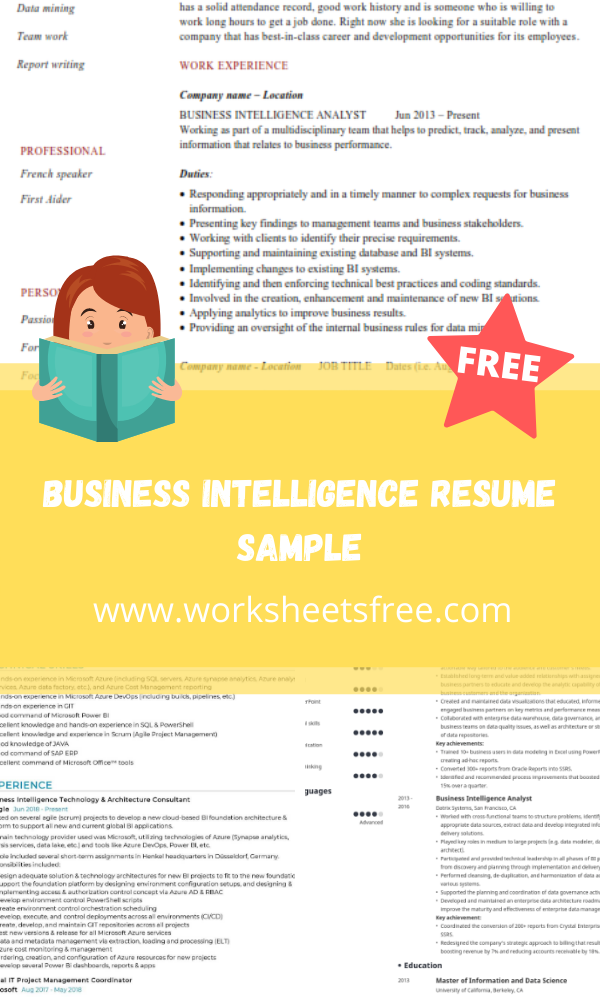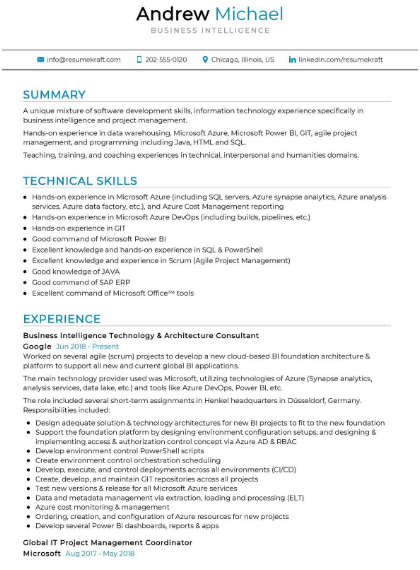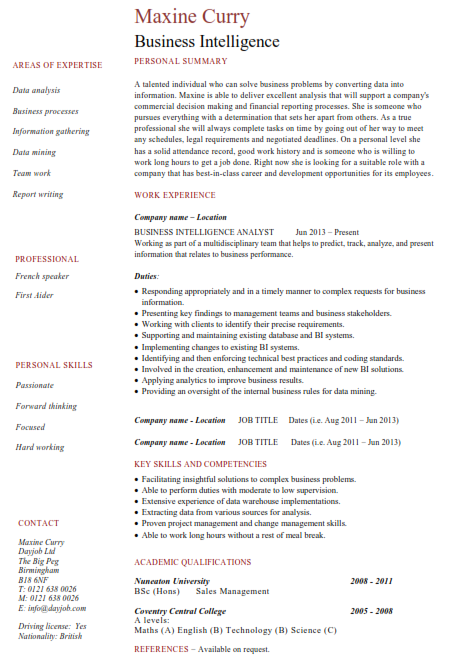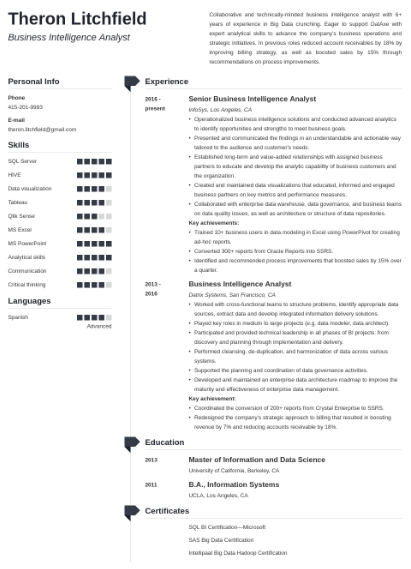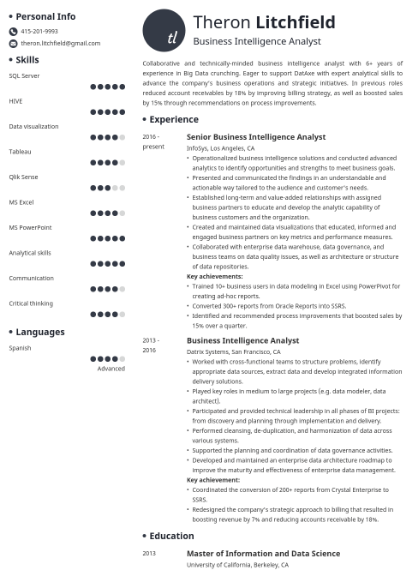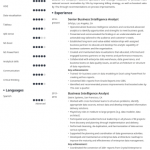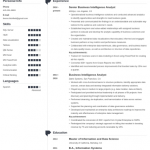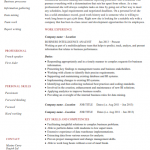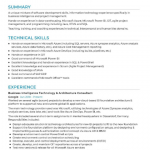This is a quick review of the Business Intelligence Resume Example. The objective to create a Business Intelligence Resume Example was to teach students how to create professional business intelligence resumes. The idea here is to create professional resumes that are free from typos and grammatical errors. There are also different formatting rules that must be followed when writing resumes. This guide will help you understand what to include in your resume. Read on to get more information.

Business Intelligence Resume Sample
Business Intelligence Resume Sample
Here’s a quick review of the main points covered in the Business Intelligence Resume Example: Use one-liners to write your professional expertise section and then group them under relevant subheads to create more impact and readable language. Do not write a generic business intelligence resume for every possible job you are applying for. Your focus must be on specific industry-related skills that will serve you well for that job.

Business Intelligence Resume Sample 1
To do this, you must understand how business intelligence resume sample professions write their professional experience sections. Look out for a list of bullet points at the bottom of the page where there is space to type in your key skills. These bullets or lists of keywords/keywords will serve as your guide to writing your relevant one-liners. You can use bolding and italics to highlight your professional experience points. However, be sure that your bolding and italics do not interfere with the readability of your content.

Business Intelligence Resume Sample 2
The next thing to do is to write your objective or profile title. This is the most important part of your business intelligence resume sample as it serves as your “bait” to get hired by a potential employer. This profile title or goal should include two or three keywords or keyword phrases that you think would be best used in your objective or profile paragraph. It is also advisable to place the keyword or phrase at the beginning of your personal information section. Remember to use the keyword or phrase in a way where it is emphasized. For instance, if your objective or profile title is “become a social media manager”, your personal information section’s font color should be light blue or a shade lighter than your background color.

Business Intelligence Resume Sample 3
The third important tip for writing your business intelligence resume sample is to put all your relevant employment history, educational background and professional experience under one single heading. Put your most relevant employment history or job titles at the beginning of your personal information section, while all other positions or jobs should be listed in the middle of your career summary. In the case of an existing resume, you can use the appropriate section to put all your most recent job titles and employment history under one heading. You can also use the id code of your most recent position at the top of your business intelligence resume sample.

Business Intelligence Resume Sample 4
When you are done with writing your business intelligence analyst resume sample, you should have one final tip to give to any potential employer. In order to get hired as a business intelligence analyst, you need to be able to market yourself and your skills effectively. Therefore, you need to use powerful yet simple one-liners or sayings in your resume and apply them smartly wherever necessary. Examples of effective one-liners or sayings are those that can be commonly found on the Internet, in e-books, or articles written about the position you are applying for. A business intelligence analyst resume guide should make this easy to do.
